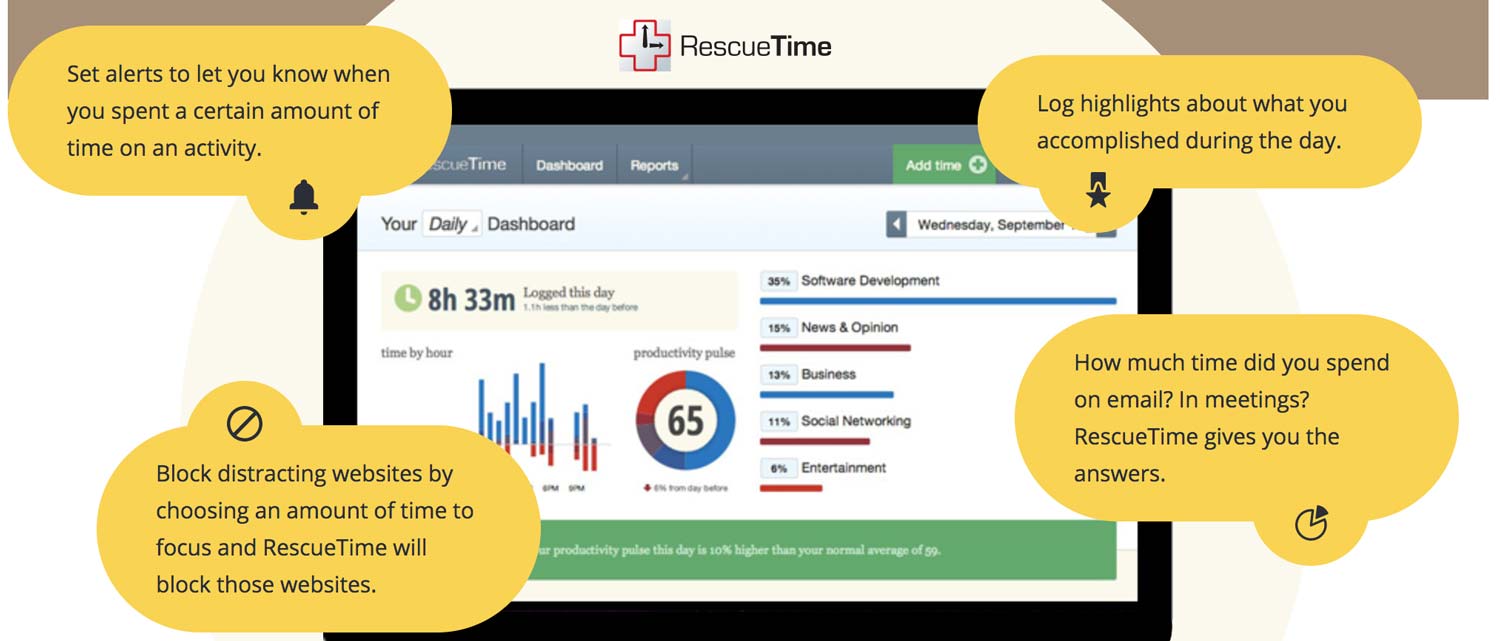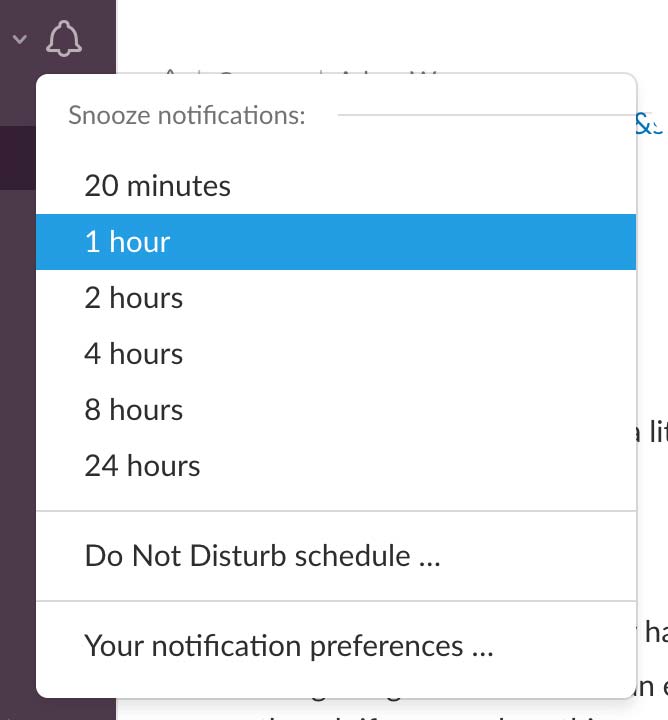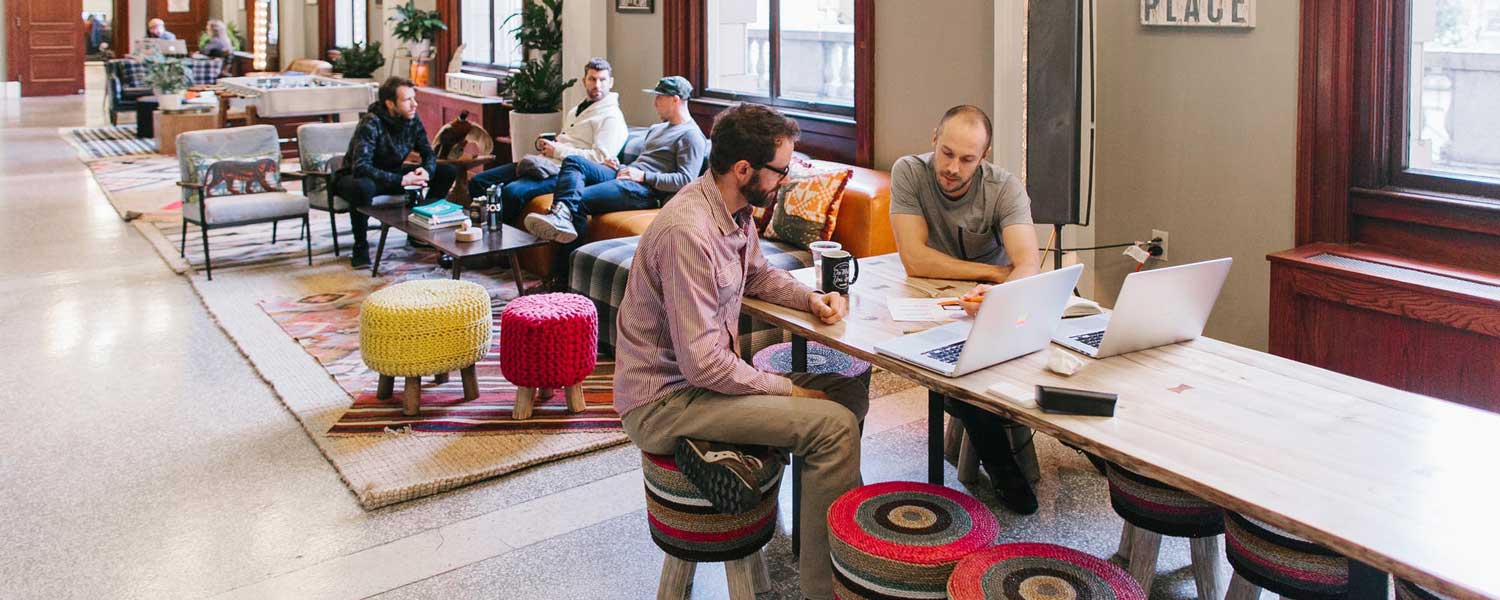
3 Steps to Increased Productivity When Working Remote
Ahh, remote working, the holy grail of employment. Plenty of time for family and friends, meetings in your underwear, and working from the beach with a cocktail in your hand. There are a lot of GOOD reasons to go remote, but it can quickly turn into its own special set of challenges. In fact, it’s easier than you think to get behind on deadlines and become overwhelmed. Remote working is still a very new way of life that many companies are only beginning to explore, so there aren’t always great procedures in place to support the productivity and efficiency of remote workers.
Fortunately, there are 3 basic steps you can take as a remote worker that will put you on the path to success. With self-discipline and a good strategy for managing your time, remote working CAN be the holy grail!

1. Get Organized
Getting organized is the number one place to start — we’re talking physical AND mental organization.
Have a Dedicated Workspace & Computer
Set aside a dedicated place in your home that’s for “work only” and it should be OUTSIDE of your bedroom. Having a workspace cluttered with projects, bills, and other personal items offers distractions that can impact productivity.
Once the initial novelty wears off, it’s very easy to find yourself struggling to separate life and work when working remotely. Despite what many employers may think, remote workers actually put in MORE hours than their on-site counterparts! How? There are a few reasons. Separating work and personal life is much more difficult when it’s all contained in the same environment. You no longer have the rustle and noise of your coworkers leaving or lights dimming – there’s no “signal” to your brain that it’s quittin’ time. When you work from home, disengaging from work mode can be much more difficult. Having a dedicated work space that you can “leave” when work is done (and, if possible, a separate computer that you only use for work related activities!) helps to create that mental separation.
[ Did you know? ]Remote workers often put in MORE hours than traditional onsite employees!
Another reason for remote “overworking” is that tasks that were traditionally done in the office are not always reviewed for a remote situation, making it more difficult or time consuming for remote workers to do these same tasks. This can cause confusion or create delays. Communication breakdown is common, as many workers are used to in-person interaction with co-workers, and switching to chat or video chat can be a difficult adjustment. Accessing files and information needed to do your job can also be a challenge. If documents or resources are only available onsite or via intranet (or not written at all!), remote workers will feel far less supported to be effective and productive in their job.
Many workplaces today only have a few remote workers, so most standard processes haven’t been optimized to support remote workers, who may end up struggling to do the same tasks. Companies expecting the same amount and quality output from a remote worker, without making accommodations for the remote format, are going to run into trouble. Reviewing these processes to accommodate remote workers will greatly improve productivity.
Weekly Progress Meetings or Stand-Ups
It can be difficult to know what’s going on inside the office when you are a remote worker. Although there are many instant messaging platforms to help you stay connected in real-time, it’s never quite the same as the interoffice banter and casual conversation you get onsite. As a result, you can sometimes feel out of the loop. In order to create the highest degree of transparency with your team push for a weekly progress meeting or at the very minimum, a quick stand-up for team members to offer project updates. This will go a LONG way toward making everyone feel like they know what’s going on.

The SiteLock Marketing team! Adam and I are there…in plate form! :B
Trello Boards and Time Tracking, oh my!
What? You say you get so busy during the week that you look back at the end of it all and wonder where all those hours went? You are not alone. Task organization and time tracking is difficult for EVERYONE, and when you add remote work challenges to that, it actually becomes necessary.
At the beginning of each week, at Nathan Ingram’s suggestion (if you haven’t seen Nathan’s talk on Taming the Whirlwind, I recommend you watch it!), I create a Trello board of all my tasks for the week and update it accordingly every day. I have a “Try to Get to This Week” board and keep an ongoing list of tasks to tackle as I find time. Not only does this go a long way toward helping me review and summarize my work in weekly meetings, but it also helps me plan out my week from a distance. More robust project management apps like Asana can also be a great help for communicating task details, status and due dates to multiple people on a project.

RescueTime offers many features to help you stay aware of the time you are spending on each task
Speaking of status and due dates, I HIGHLY recommend using a time tracking app no matter what kind of worker you are. Some workers are required to keep very detailed reports of their time, but some don’t need to track at all. An automated time tracker such as RescueTime provides a weekly overview of where all your time was spent that week. Using this data to review “time suck” activities, such as spending 30 minutes adjusting your code for a single pixel on the page (yes, I really did this once), can help you be more aware of your productivity. Often, tasks end up taking longer than we realize, and tracking that time can help us to continually review and improve our processes.
2. Minimize Distraction
Working from home always comes with inevitable interruptions. Visitors, family, and friends can unknowingly create various distractions that impact your productivity. They may not realize how much they are interrupting you when they pop in for a quick chat or to ask you to help with something, because it’s just so easy when you’re right there. But those distractions add up to a lot of lost productivity. Working in an office environment mitigates these types of distractions, so you need to work extra hard to make sure your remote workplace is the same. Communicate to anyone else in your home that distractions should be kept to a minimum and that certain hours are reserved for work.
Don’t be afraid of Do Not Disturb Mode

And on that note, use the “busy” button! Most chat and communication software has a way to set yourself as busy or in “do not disturb” mode. Even a quick chat from a coworker can ruin a good burst of productivity, so when you really need to focus and get things done, don’t be afraid to mark yourself as unavailable or delay notifications until you are finished.
Block Distracting Websites While You Work
People aren’t the only distractions. Sometimes we can be our own worst enemy. In this digital age, there’s so much competing for your attention just on your small laptop that it is easy to get distracted and drop out of your “zone”. StayFocusd and RescueTime both have browser and device apps that can monitor the sites you open and warn you when you’ve opened a “distracting” site like Facebook or Reddit. You can even set it to block “distracting” sites for certain hours to make sure you don’t slip up!
Even your phone can work against you. Constant notifications of text messages and social media mentions can pull you away to unrelated things in a second. There are many focus apps for smart devices that will delay notifications until after you are finished working.
3. Get In the Zone
The traditional workplace lifestyle often goes unappreciated…until you start working remotely. For example, most people don’t realise that a physical workplace helps create a very distinct schedule that allows you to organize your day in a way that is easy to follow. This includes waking up early, getting ready, commuting to the office, morning greetings – all the things that signal to your brain, “it’s work time!” But when you work from home, those cues can disappear, making it difficult to transition through the work day.
I highly recommend getting ready on the same schedule you would as if you were leaving the house to go to work – even if you’re just walking into the den to your desk. This means taking a shower, going through your morning routine, and getting dressed in real clothes, not just pajamas. I know…it’s tempting to take morning meetings from bed just because you can, but that “rush” in the morning can actually be a really good thing. It gets you out of sleepy house mode, and into work mode, setting you up for a productive day.
Routine is important.
Just like in a traditional office workplace, it’s important to follow a routine when working from home and don’t forget to take breaks! Believe it or not, there can be some guilt associated with remote working, and getting remote workers to take breaks is actually more difficult than you might think. Take the time to establish a routine, with breakfast and lunch, and periodic breaks to rest your eyes and stretch.
Many people also make use of a method called The Pomodoro Technique. This technique uses a timer to break down work into intervals, traditionally 25 minutes in length, separated by short breaks. This gives you set time to focus on work output without getting carried away and missing breaks or lunches. Not taking breaks can actually be very counterproductive, so make sure you’re scheduling them into your day.

Coworking spaces, like Custom House in downtown Portland, OR, offer an open workspace with lots of opportunity for interaction throughout the day
Be Motivated by Others
Just because you’re not working from an office, doesn’t mean you are doomed to a life of never leaving the house. Get out and work from a coffee shop or co-working facility a few times a week. Surrounding yourself with others who are being productive can help inspire and encourage you to get things done. This has the added benefit of having friends and colleagues on hand for socialization and bouncing ideas off each other. Check out WeWork, a coworking collective with locations all across the country. Your monthly rent gives you access to all of their locations, so the allure of travel AND work can actually be a real thing. There are many other smaller coworking spaces all around the country, so check your own town’s listings for spaces in your area.
Meetups and conferences are also a great way for remote workers to spend time with colleagues and others in the field. Communities like WordPress have many events throughout the year where you can get involved and spend time socializing, volunteering, sharing your knowledge and having fun.
A remote working lifestyle, like any lifestyle change, takes some getting used to. But you will find things that work best for you as you go. Keeping these 3 rules in mind will help you to build the work/ life balance that best suits you!





